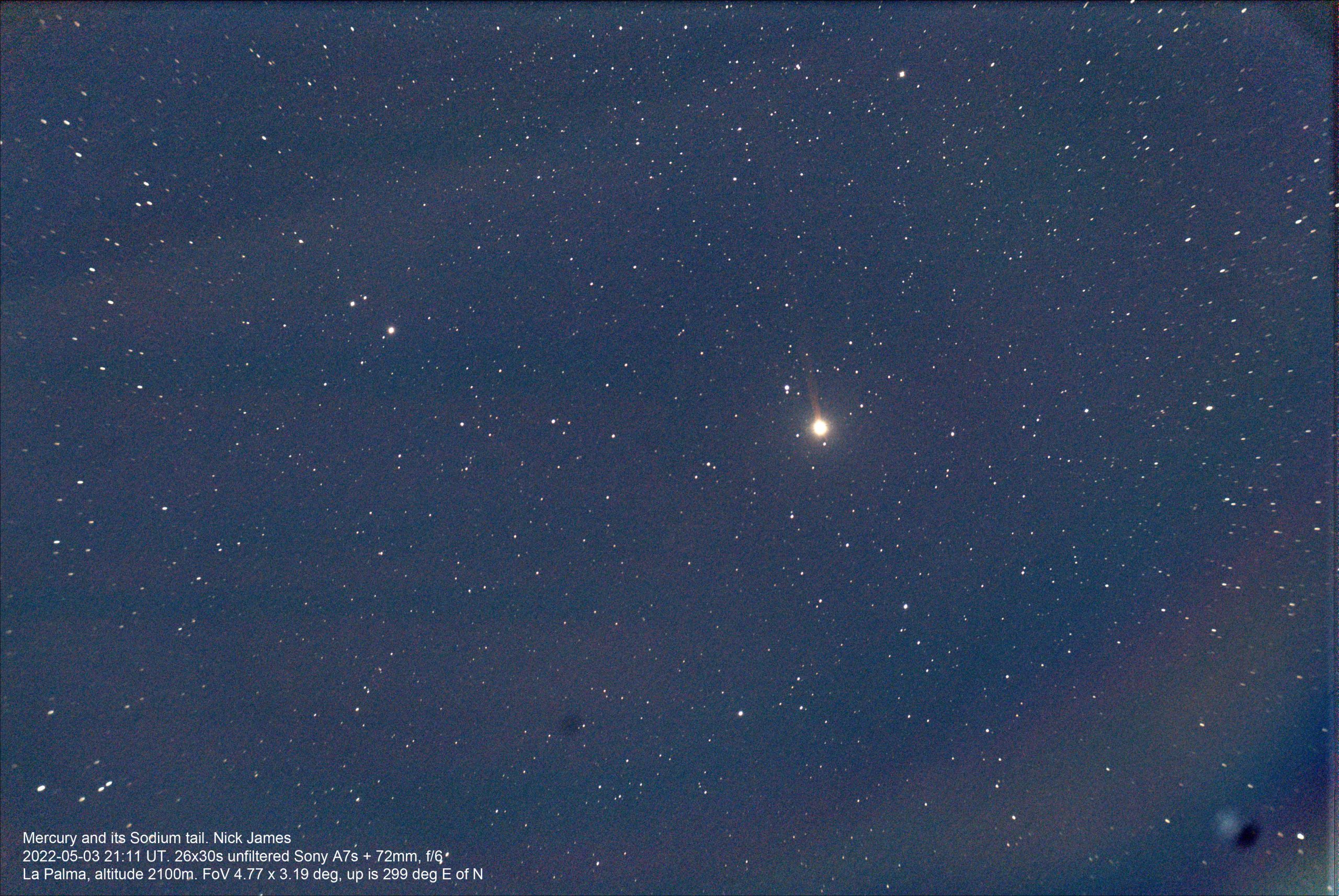Photographing the sodium tail of Mercury
2022 June 6
Mercury’s very thin atmosphere was first detected by the Mariner 10 spacecraft back in 1974. It consists of atoms captured from the solar wind or liberated from the surface. The solar wind is strong enough to push these atoms away from Mercury to form a tail, the main component of which is neutral sodium.
The sodium tail is excited by incoming solar photons at the resonant wavelength of 589nm, but there are not many of these since there is a strong Fraunhofer absorption line at this point in the solar spectrum. The best opportunities to observe the tail are when Mercury has its maximum radial velocity with respect to the Sun. The Doppler effect then shifts the apparent position of the absorption line, so that incident flux at 589nm increases. The best opportunities occur around ±16 days either side of perihelion.

Observation of the tail from Earth is difficult, since it is very low-contrast and easily overwhelmed by the light of the background sky or of Mercury itself. Most successful imagers have used a 589nm bandpass filter to significantly increase the contrast. Chris Hooker has managed to image the tail from Oxfordshire using this technique.
I was on La Palma in early May and was able to image Mercury from 2,100m, in very transparent skies, using a combination of an unfiltered Sony A7s camera and a William Optics 72mm, ƒ/6 refractor. The image here was taken when Mercury was at an altitude of 1.5°, about 3° above the true horizon. The combination of superb transparency and a dark sky at that altitude meant that the sodium tail was prominent without any filter. In this image, the yellow colour of the tail stands out against the deep blue of the sky. I think it unlikely to be possible to image the tail without a filter from anywhere in the UK, but I would be happy to be proven wrong!
Nick James, Director, Comet Section
| The British Astronomical Association supports amateur astronomers around the UK and the rest of the world. Find out more about the BAA or join us. |
